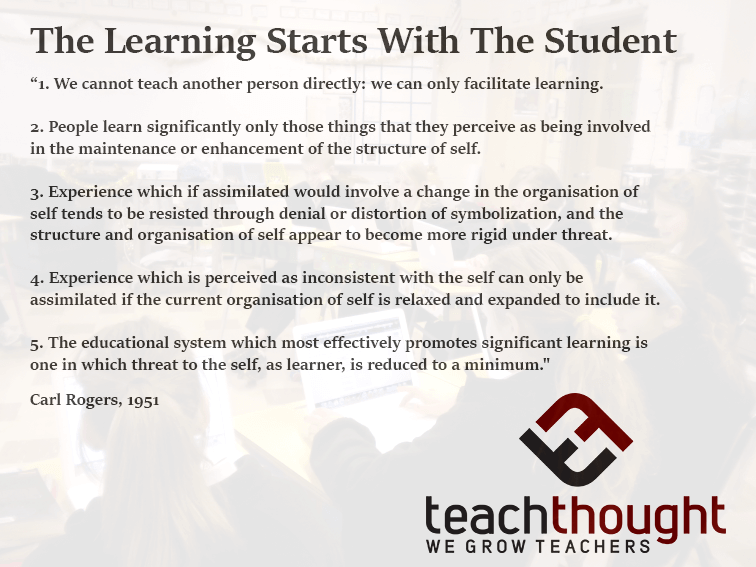
What Did Carl Rogers Say About Learning?
by TeachThought Staff
In our continuing reading and research on learning–whether we’re looking at project-based learning, problem-based learning, blended learning, or any number of other approaches–we often bump into the idea of self-directed learning.
This is not a coincidence, we believe, as even Dewey promoted the concept of a self-directed and self-sufficient learner. At some point, though, we have gotten away from that idea–calling for self-direction by learners, but only to better function in an otherwise teacher-directed environment.
In contrast to pedagogy, which focuses on the efficient delivery of instruction and content, heutagogy focuses instead on the process of learning itself–how to learn rather than what to learn. In the same link, you’ll see 5 hypotheses from Carl Rogers (1951) about learning that collectively promote the concept of self-directed learning–even in a typical K-20 formal learning environment.
The Learning Starts With The Student: 5 Statements
- “We cannot teach another person directly: we can only facilitate learning
- People learn significantly only those things that they perceive as being involved in the maintenance or enhancement of the structure of self
- Experience which if assimilated would involve a change in the organization of self tends to be resisted through denial or distortion of symbolization, and the structure and organization of self appear to become more rigid under threat
- Experience which is perceived as inconsistent with the self can only be assimilated if the current organization of self is relaxed and expanded to include it
- The educational system which most effectively promotes significant learning is one in which threat to the self, as learner, is reduced to a minimum.”
